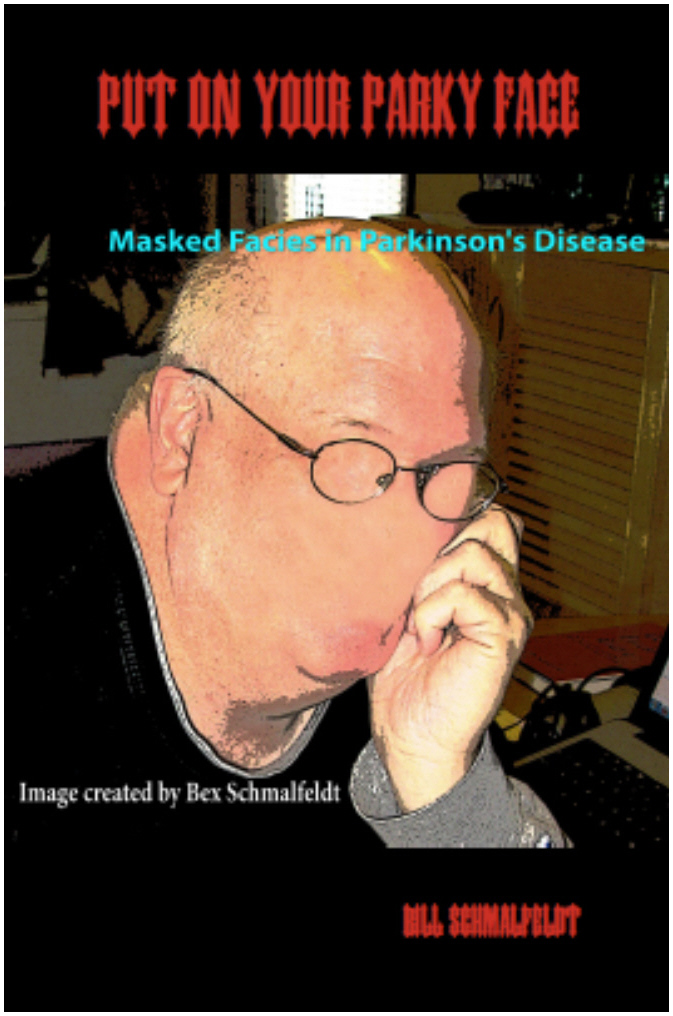|
JANUARY
2011
�������������������������������������������� ��������������������������������������������������������������������������������������������������������
29th January 2011 - New review
THE AGE OF DIAGNOSIS IN PARKINSON'S DISEASE
In 1875, Henri Huchard (1844-1911) detailed the
first case of Juvenile Parkinson's Disease. He described a 3 year old child who
had all the clinical features of Parkinson's Disease. The youngest reported case
of Parkinson's Disease is that of a 10 year old girl from Okalahoma, who showed
her first symptoms of Parkinson's Disease at only 2 years old. However, it is very uncommon for people under the age of 30 to develop Parkinson's
Disease. The likelihood of
developing Parkinson's Disease becomes increasingly
more common with age [1,
2,
3,
4,
5,
6].
 The average age at which symptoms usually begin differs from county to country,
most typically in the late fifties, with the latest average onset being in Sweden 65.6 [7],
and Estonia 66.9 [8].
The likelihood of Parkinson's Disease increases sharply at the age of 60, and
peaks in those aged 85 to 89 years old [9].
However, the likelihood of developing Parkinson's Disease actually starts to
decline at 90 years of age [9],
and reduces even further after that. Parkinson's Disease is rare amongst the
very old - those people over 100 [10],
and even more so in those people who are 110 to 119 years old [11].
So despite Parkinson's Disease usually being assumed to be a medical disorder of
older age, it is possible for a 2 year old to have Parkinson's Disease, and for
a 119 year old to not have Parkinson's Disease.
In order to refer to this
article on its own
click here. The average age at which symptoms usually begin differs from county to country,
most typically in the late fifties, with the latest average onset being in Sweden 65.6 [7],
and Estonia 66.9 [8].
The likelihood of Parkinson's Disease increases sharply at the age of 60, and
peaks in those aged 85 to 89 years old [9].
However, the likelihood of developing Parkinson's Disease actually starts to
decline at 90 years of age [9],
and reduces even further after that. Parkinson's Disease is rare amongst the
very old - those people over 100 [10],
and even more so in those people who are 110 to 119 years old [11].
So despite Parkinson's Disease usually being assumed to be a medical disorder of
older age, it is possible for a 2 year old to have Parkinson's Disease, and for
a 119 year old to not have Parkinson's Disease.
In order to refer to this
article on its own
click here.
�
16th January 2011 - New research
AMANTADINE FOR DYSKINESIAS IN PARKINSON'S
DISEASE
BasedPLoS One [2010] 5
(12) : e15298 (Sawada H, Oeda T, Kuno S, Nomoto M, Yamamoto K, Yamamoto M,
Hisanaga K, Kawamura T)
Complete abstract
The purpose of the
present study was to investigate the efficacy of Amantadine in people with Parkinson's
Disease suffering from dyskinesias. Dyskinesias, which are involuntary
movements, are some of the major complications that impair quality of life for
some people with Parkinson's disease. They are normally caused by an excess of
dopaminergic drugs, such as L-dopa in its various forms, and dopamine agonists.
For more information go to
Dyskinesia in Parkinson's Disease. A controlled
clinical trial was carried out using
 300mg
per day of Amantadine, which is also marketed as Symmetrel. For more information
go to
Symmetrel. Using the Rush Dyskinesia Rating Scale (RDRS), 64% of
those people taking Amantadine improved, whereas only 16% of those people taking
the placebo improved. Some Parkinson's Disease symptoms improved, but others did
not. Results from the present study demonstrated that Amantadine
exhibited beneficial effects against dyskinesias in 60% to 70% of people with
Parkinson's Disease. However, the study did not indicate the side effects caused
as a result of taking Amantadine.
In order to refer to this
article on its own
click here. 300mg
per day of Amantadine, which is also marketed as Symmetrel. For more information
go to
Symmetrel. Using the Rush Dyskinesia Rating Scale (RDRS), 64% of
those people taking Amantadine improved, whereas only 16% of those people taking
the placebo improved. Some Parkinson's Disease symptoms improved, but others did
not. Results from the present study demonstrated that Amantadine
exhibited beneficial effects against dyskinesias in 60% to 70% of people with
Parkinson's Disease. However, the study did not indicate the side effects caused
as a result of taking Amantadine.
In order to refer to this
article on its own
click here.
�
13th January 2011 - New research
THE PREVALENCE OF EYE DISORDERS IN PARKINSON'S DISEASE
Klinica Oczna [2010] 112
(7-9) : 247-252 (Nowacka B, Lubinski W, Karczewicz D.)
Complete abstract
Based on the available medical literature, the authors described the most
frequent ocular diseases (eye disorders) and symptoms, as well as bioelectrical
dysfunction of the visual pathway in patients with Parkinson's Disease. The most frequent eye
disorders in Parkinson's Disease were found to be dry eye syndrome and glaucoma.
In Dry Eye Syndrome, the lack of
moistness in the eyes can cause eyes to become dry, itchy, red, gritty, or
blurred. For more
 information
go to
Dry Eye Syndrome. In Glaucoma, the optic nerve
fibers become damaged. Small blind spots can occur, and can develop in
to significant loss of vision. Most people
with glaucoma do not notice the symptoms until they have significant loss of
vision.
For more information go to
Glaucoma. A quarter of people with
Parkinson's Disease have visual hallucinations. The visual hallucinations are
usually due to an excess of dopaminergic drugs such as L-dopa in its various
forms, or dopamine agonists. Visual hallucinations are not normally due to a
problem with the structure of the eyes. For more information go to
Hallucinations in Parkinson's Disease.
In order to refer to this
article on its own
click here. information
go to
Dry Eye Syndrome. In Glaucoma, the optic nerve
fibers become damaged. Small blind spots can occur, and can develop in
to significant loss of vision. Most people
with glaucoma do not notice the symptoms until they have significant loss of
vision.
For more information go to
Glaucoma. A quarter of people with
Parkinson's Disease have visual hallucinations. The visual hallucinations are
usually due to an excess of dopaminergic drugs such as L-dopa in its various
forms, or dopamine agonists. Visual hallucinations are not normally due to a
problem with the structure of the eyes. For more information go to
Hallucinations in Parkinson's Disease.
In order to refer to this
article on its own
click here.
�
3rd January 2011 - New book
PUT ON YOUR PARKY FACE
Bill Schmalfeldt
 Publisher's
description : Bill Schmalfeldt is serving notice. It's time for Parkinson's
disease patients to stop being invisible. It's time for a nationwide effort to
raise awareness about a crippling degenerative neurological disorder and the
havoc it wreaks on American families. Having had PD himself since 2000 at age
45, Bill volunteered for experimental brain surgery in 2007. He spins a
humorous, poignant, sometimes angry tale about his life with this incurable
progressive neurological condition. 100% of the author proceeds from this book
will be donated to Parkinson's research charities. This book should be owned by
anyone who has Parkinson's, or knows someone with PD, or anyone who
might GET Parkinson's someday - in other words...YOU!�
Click here for more details.
For
more books concerning Parkinson's Disease go to
Parkinson's Disease Books. Publisher's
description : Bill Schmalfeldt is serving notice. It's time for Parkinson's
disease patients to stop being invisible. It's time for a nationwide effort to
raise awareness about a crippling degenerative neurological disorder and the
havoc it wreaks on American families. Having had PD himself since 2000 at age
45, Bill volunteered for experimental brain surgery in 2007. He spins a
humorous, poignant, sometimes angry tale about his life with this incurable
progressive neurological condition. 100% of the author proceeds from this book
will be donated to Parkinson's research charities. This book should be owned by
anyone who has Parkinson's, or knows someone with PD, or anyone who
might GET Parkinson's someday - in other words...YOU!�
Click here for more details.
For
more books concerning Parkinson's Disease go to
Parkinson's Disease Books.
�
��
|
.gif)
.gif)
 The average age at which symptoms usually begin differs from county to country,
most typically in the late fifties, with the latest average onset being in Sweden 65.6 [
The average age at which symptoms usually begin differs from county to country,
most typically in the late fifties, with the latest average onset being in Sweden 65.6 [ 300mg
per day of Amantadine, which is also marketed as Symmetrel. For more information
go to
300mg
per day of Amantadine, which is also marketed as Symmetrel. For more information
go to  information
go to
information
go to  Publisher's
description : Bill Schmalfeldt is serving notice. It's time for Parkinson's
disease patients to stop being invisible. It's time for a nationwide effort to
raise awareness about a crippling degenerative neurological disorder and the
havoc it wreaks on American families. Having had PD himself since 2000 at age
45, Bill volunteered for experimental brain surgery in 2007. He spins a
humorous, poignant, sometimes angry tale about his life with this incurable
progressive neurological condition. 100% of the author proceeds from this book
will be donated to Parkinson's research charities. This book should be owned by
anyone who has Parkinson's, or knows someone with PD, or anyone who
might GET Parkinson's someday - in other words...YOU!�
Publisher's
description : Bill Schmalfeldt is serving notice. It's time for Parkinson's
disease patients to stop being invisible. It's time for a nationwide effort to
raise awareness about a crippling degenerative neurological disorder and the
havoc it wreaks on American families. Having had PD himself since 2000 at age
45, Bill volunteered for experimental brain surgery in 2007. He spins a
humorous, poignant, sometimes angry tale about his life with this incurable
progressive neurological condition. 100% of the author proceeds from this book
will be donated to Parkinson's research charities. This book should be owned by
anyone who has Parkinson's, or knows someone with PD, or anyone who
might GET Parkinson's someday - in other words...YOU!�